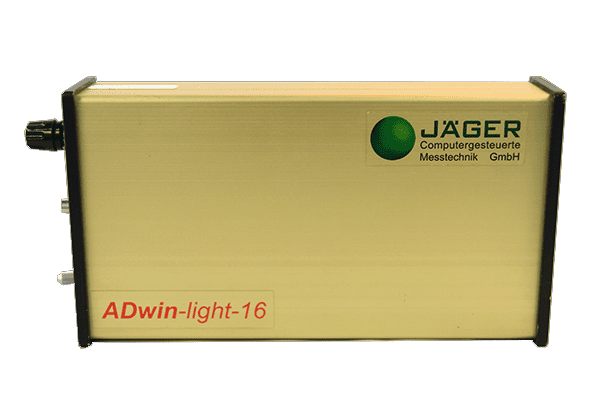ADwin Enables Precise Switching of Magnetic Fields
 Paleomagnetic research studies the magnetic history of geology as embodied in rock samples. These samples of interest contain metallic traces still oriented to the earth’s magnetic field as it existed at the time of the rock’s formation. To save time spent taking manual measurements, laboratory researchers are using automated measurement systems for precise real-time control. CAS DataLoggers supplies researchers in this field with ADwin Data Acquisition and Control Systems. Since 2012 we’ve provided a lab systems integrator with ADwin solutions to ensure that its custom systems meet the highest standards.
Paleomagnetic research studies the magnetic history of geology as embodied in rock samples. These samples of interest contain metallic traces still oriented to the earth’s magnetic field as it existed at the time of the rock’s formation. To save time spent taking manual measurements, laboratory researchers are using automated measurement systems for precise real-time control. CAS DataLoggers supplies researchers in this field with ADwin Data Acquisition and Control Systems. Since 2012 we’ve provided a lab systems integrator with ADwin solutions to ensure that its custom systems meet the highest standards.
What is Paleomagnetism?
Paleomagnetic researchers view data of the direction of rocks’ magnetic fields at the time the samples were formed. This reveals how the earth’s own magnetic field has changed over time. Analyzing this data, they attempt to forecast its future direction along with any possible disruptive effects.
For example, if the earth’s magnetic field were to reverse again by flipping its north/ south polarity, this could cause several critical events including bombardment by high-energy particles, satellite malfunctions, etc.
However, work in this field demands that researchers spend much of their time taking a seemingly-endless succession of measurements on hundreds of thousands of rock samples. The only way to obtain accurate measurements is to manually measure each sample several times in several different positions relative to a magnetometer. Increasingly, researchers are implementing automated measurement systems to remove some of the time burdens and to reduce measurement errors.
Automated Measurement & Precise Control
Modern data acquisition systems have flexible instrumentation and powerful analysis software capabilities that aid lab research. At CAS DataLoggers, one of our customers is a systems integrator manufacturing analog magnetometers incorporating ADwin Data Loggers and Data Acquisition Systems.
 The ADwin-Light-16 is an intelligent real-time data acquisition and control system with analog and digital I/O, counters, and a microprocessor with local memory. They are ideal, solutions for fast data acquisition and control in real time under Windows.
The ADwin-Light-16 is an intelligent real-time data acquisition and control system with analog and digital I/O, counters, and a microprocessor with local memory. They are ideal, solutions for fast data acquisition and control in real time under Windows.
Since 2012, our systems integrator customer incorporates ADwin-Light-16 EXT hardware, which is an ADwin-L16 in an external industrial enclosure (226x109x44 mm). Users retrieve the data via each system’s USB interface to the PC. Other versions include a PCI plug-in board, a CompactPCI version, a EURO-size plug-in board, and an external USB or Ethernet system.
The on-board SHARC DSP processor with its own local memory handles system management, data acquisition, on-line processing and control of outputs. Processing of each measurement can occur immediately after acquisition.
ADwin Gold
RAPID, a consortium of academic researchers working in this field, uses ADwin in several of their own systems to perform paleomagnetic measurements on samples. Users are ensured of accurate readings even on samples with weak magnetic intensities. Specimens are placed within vacuum systems controlled using real-time computers, including systems with ADwin hardware.
RAPID has since expanded its systems to include control of Af demagnetization, susceptibility measurements and more, which saves researchers time by allowing a greater volume of rock-magnetic experiments to be done automatically.
The RAPID research consortium uses ADwin Gold Real-Time devices in their systems as high-speed 24-bit Analog-to-Digital converters to control the Af demagnetization process ramp cycle. ADwin can dynamically control output waveforms at speeds of several hundred kHz at frequencies up to 1000 Hz. The ADwin also helps to stabilize calibration data. Using ADwin as a controller for existing systems in this way makes these systems much more affordable.
ADwin’s ability to quickly perform Fast Fourier Transforms (FFTs) is equally useful when recording and monitoring waveform distortions. The ADwin’s TTL signals activate the system’s solid-state relays which directly control high-current relays. The RAPID system also links to a differential voltmeter channel using an ADwin expansion card.
Equipped with ADwin, RAPID systems are now operational at Caltech, University of Johannesburg, Baylor University, and the University of Edinburgh.
Sensors
The RAPID system takes readings from rock samples using the Magnetic Instruments 908A Hall probe. Users position the Hall probe sensor inside the opening of the sample handler’s quartz glass tube, while a simple X-Y stage moves the samples around between measurements.
Sensor calibration values are written into a CSV-formatted ASCII file that can be opened with Microsoft Excel™ and uploaded into the system’s master initialization file.
Data Analysis in MatLab
The ADwin software contains drivers for MatLab, LabView, and many other applications, making it simpler to parse the data from this many measurements. For lower-volume research projects, users can also view data in databases such as Excel.
The ADbasic control language allows users to program mathematical operations and functions which are executed immediately after each sampling step even at sampling rates as high as 100 kHz.
Gold-II
Another automated system in use in this field, the innovative ‘SushiBar’ system, uses an ADWin Gold II Data Acquisition System to control the input signal of a Crest audio amplifier. This amplifier in turn powers the AC windings of the coil for alternating field demagnetization.
Meanwhile the ADwin’s 16-bit I/Os use the coil’s current as feedback to regulate magnetic field intensity. The coaxial DC coil system is powered by a bipolar supply also controlled by the ADwin Gold-II system, which allows users to switch the DC field extremely quickly.
Software
ADwin has now been flexibly incorporated into the RAPID software. The system’s Hall probe communicates with RAPID’s software via USB, changing range and setting functions automatically.
The ADwin software environment can be used under Windows and Linux or as a stand-alone data acquisition system. Also, ADwin has drivers for many of the popular programming environments including Visual Basic, Visual C/C++, LabVIEW/LabWindows, TestPoint, and others.
Benefits
In addition to automating experiment control and analysis, ADwin offers several benefits to lab research in this and other applications. ADwin hardware is affordable and enables real-time control, fast FFT, flexible driver support, and Ethernet connection.
RAPID systems have now been implemented in several other members of its consortium laboratories including Vanderbilt, Occidental, MIT, Yale, USGS Menlo, UT Austin, and more.
For more information on ADwin Data Acquisition Systems, automated measurement systems or to find the ideal solution for your application-specific needs, contact a CAS DataLogger Application Specialist at (800) 956-4437 or request more information.

